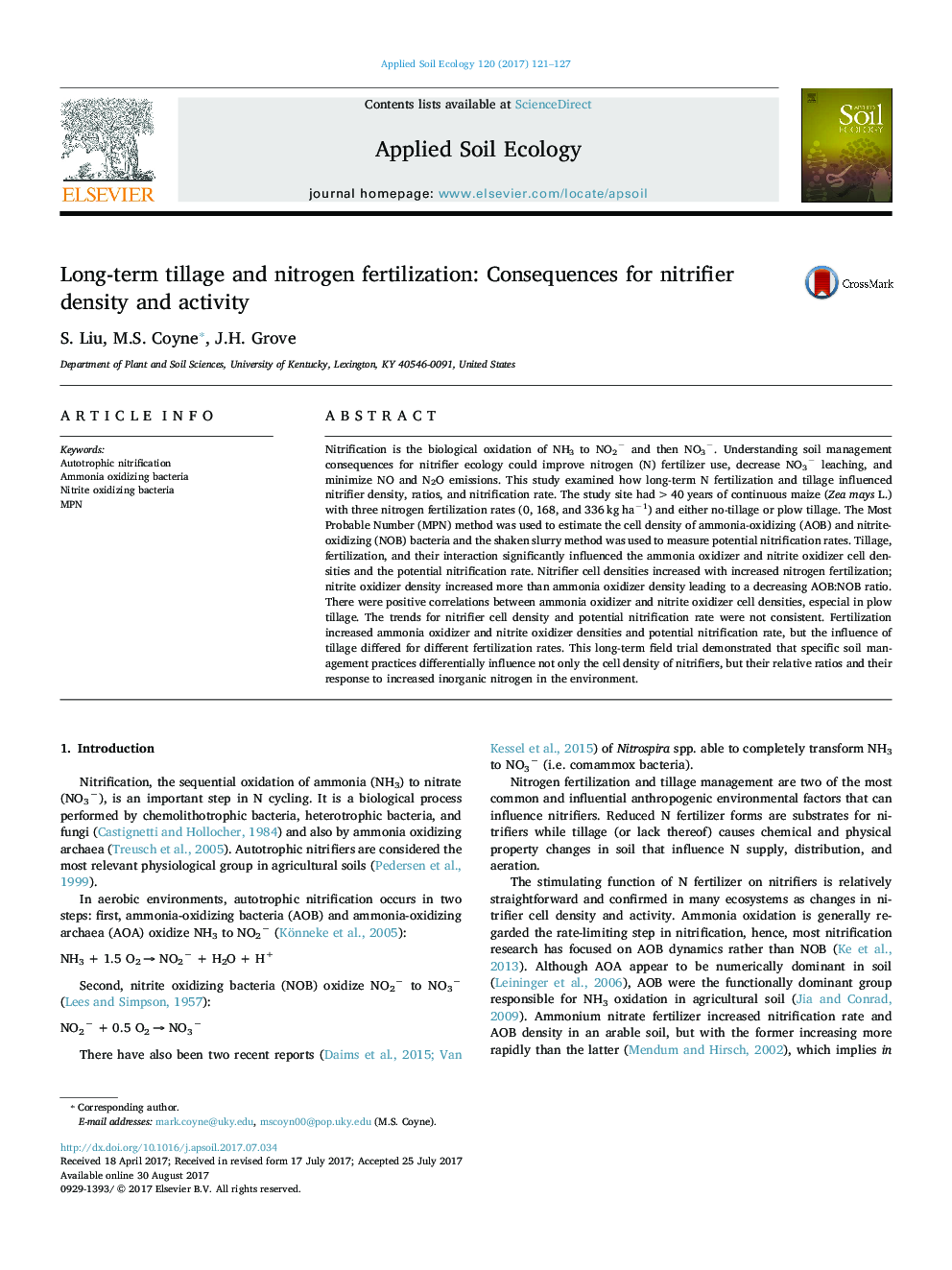| Article ID | Journal | Published Year | Pages | File Type |
|---|---|---|---|---|
| 5742579 | Applied Soil Ecology | 2017 | 7 Pages |
â¢Tillage, N, and their interaction affect NH3 and NO2â oxidizing Most Probable Number.â¢NH3 (AOB) and NO2â oxidizing (NOB) bacteria positively respond to N fertilization.â¢Ratios of AOB/NOB decline with increasing N fertilization.â¢Nitrifier density and nitrification rate were not always consistent with management.
Nitrification is the biological oxidation of NH3 to NO2â and then NO3â. Understanding soil management consequences for nitrifier ecology could improve nitrogen (N) fertilizer use, decrease NO3â leaching, and minimize NO and N2O emissions. This study examined how long-term N fertilization and tillage influenced nitrifier density, ratios, and nitrification rate. The study site had > 40 years of continuous maize (Zea mays L.) with three nitrogen fertilization rates (0, 168, and 336 kg haâ1) and either no-tillage or plow tillage. The Most Probable Number (MPN) method was used to estimate the cell density of ammonia-oxidizing (AOB) and nitrite-oxidizing (NOB) bacteria and the shaken slurry method was used to measure potential nitrification rates. Tillage, fertilization, and their interaction significantly influenced the ammonia oxidizer and nitrite oxidizer cell densities and the potential nitrification rate. Nitrifier cell densities increased with increased nitrogen fertilization; nitrite oxidizer density increased more than ammonia oxidizer density leading to a decreasing AOB:NOB ratio. There were positive correlations between ammonia oxidizer and nitrite oxidizer cell densities, especial in plow tillage. The trends for nitrifier cell density and potential nitrification rate were not consistent. Fertilization increased ammonia oxidizer and nitrite oxidizer densities and potential nitrification rate, but the influence of tillage differed for different fertilization rates. This long-term field trial demonstrated that specific soil management practices differentially influence not only the cell density of nitrifiers, but their relative ratios and their response to increased inorganic nitrogen in the environment.
